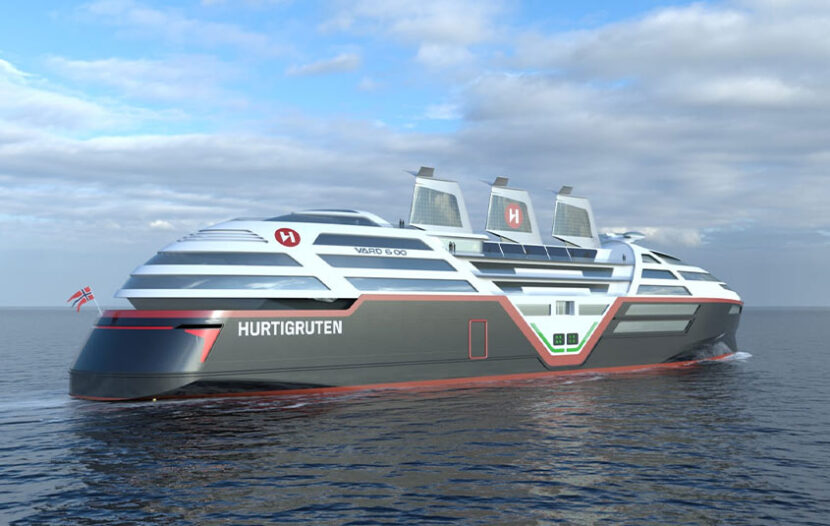OSLO — Hurtigruten Norway has unveiled plans for the world’s most energy-efficient cruise ship.
First announced in March 2022 under the project name ‘Sea Zero,’ the first-of-its-kind initiative aims to achieve emission-free marine travel. Hurtigruten Norway presented its findings earlier this week alongside its consortium of 12 maritime partners and research institute SINTEF.
“Following a rigorous feasibility study, we have pinpointed the most promising technologies for our groundbreaking future cruise ships. We are committed to delivering a ship that surpasses all others in terms of energy efficiency and sustainability within just a few years,” said Hedda Felin, CEO of Hurtigruten Norway.
In line with its sustainability goals, Hurtigruten Norway is planning for smaller, custom-built ships with zero emissions to both sea and land. ‘Sea Zero’ has now entered a two-year phase in which its proposed technologies will be tried, tested and developed further. The first ship, which will be 135 metres long with 270 cabins for 500 guests and 99 crew, is set to be ready in 2030.
Hurtigruten Norway eventually hopes to transform its entire fleet into zero-emission vessels, an ambitious plan considering only 0.1% of ships worldwide currently use zero-emission technology.
NEW & IMPROVED TECHNOLOGY
Hurtigruten Norway’s future ships will be electric and equipped with batteries that charge in port. Combining 60-megawatt battery solutions with wind technology, vessels will feature improved solutions that do not exist on cruise ships today, including retractable sails with solar panels, artificial intelligence maneuvering, contra-rotating propellers and multiple retractable thrusters. Additional technologies include air lubrication, advanced hull coating and proactive hull cleaning.
Battery levels will be displayed on the ship’s external sides. The bridge is expected to reduce significantly in size following enhanced A.I. maneuvering, mimicking that of an airplane cockpit. A.I. will be used to collect data about the most efficient docking and undocking methods for each port, improving in-port operations in inclement weather.
According to the company, a streamlined shape of the ship will result in less air resistance, reduce energy use and increase passenger comfort. Guests will also play a key role by using an interactive mobile app that can operate cabin ventilation and measure water and energy consumption.
UPGRADES TO EXISTING FLEET
While Hurtigruten Norway is working towards its first zero-emission ship, it is also currently undertaking one of the most extensive environmental upgrade in European maritime history with its existing fleet. Two of its seven ships have been upgraded to battery-hybrid-powered ships, with a third to be upgraded this fall.
Its five others vessels are being outfitted with various technologies that will cut CO2 emissions by 25% and nitrogen oxides by 80%.
In 2019, sister company Hurtigruten Expeditions introduced the world’s first battery-hybrid-powered ship, MS Roald Amundsen. The Expeditions arm now boasts three battery-hybrid ships out of its seven-ship fleet.

